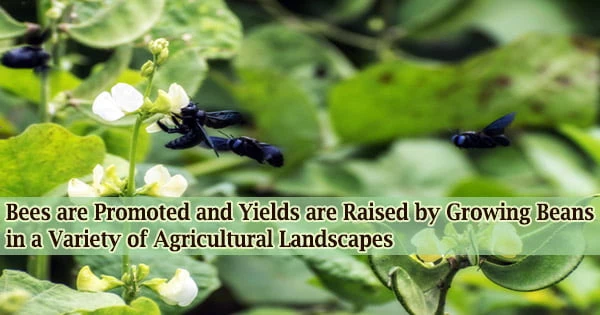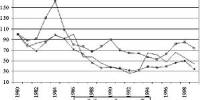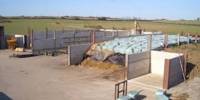Pollination by insects is essential for the production of many food crops. Bees and other pollinators require adequate food supplies and nesting locations in order to exist. Lack of these factors affects both the pollinators’ appearance and the productivity of flowering arable crops like broad beans or oilseed rape.
A team from the University of Göttingen and the Julius Kühn Institute (JKI) in Braunschweig has looked into how bee density, their behavior when gathering nectar, and faba bean (Vicia faba) yields are impacted by the composition of flowering crops and semi-natural habitats in the landscape. The journal Basic and Applied Ecology has published the study’s findings.
The study’s findings demonstrate that more bumblebees were discovered in the bean fields in landscapes with a high number of semi-natural habitats and in landscapes with a high proportion of faba beans. The bean yields were also higher here.
The researchers documented and watched how honeybees and wild bees foraged in bean fields in agricultural environments with various topographical compositions. They also determined the specifications for a plant’s particular yield.
“Insect pollination has a positive effect on faba bean yields. Our investigations showed around 34 percent more beans per pod in insect-pollinated plants compared to plants that were inaccessible to insects,” explains Dr. Doreen Gabriel from the JKI.
Our study illustrates how important the composition of the landscape is for crop yield, as shown by the example of the faba bean. The availability of flower-rich habitats can improve the density of bees in fields, their foraging behaviour, and their pollination services.
Professor Catrin Westphal
“The pollination success in faba beans does not only depend on the density of bees in the fields, but also on the particular bee species collecting nectar. Bumblebee species who have a short proboscis often steal nectar from faba beans by biting holes in the calyxes (the outer sepals that protect the flower bud). In contrast, the bumblebee species who have a longer proboscis collect nectar regularly from the front of the flower, resulting in increased rates of cross-pollination. However, there are hardly any studies that have investigated whether the behaviour of bees collecting nectar is also influenced by the availability and distribution of other resources in the landscape, that is the composition of the landscape,” says first author Dr. Nicole Beyer, who did her PhD at the University of Göttingen and now works at the Thünen Institute in Braunschweig.
The study demonstrates that when there was a large number of faba beans in the landscape, short-tongued bumblebees stole nectar from faba beans more frequently.
“Our study illustrates how important the composition of the landscape is for crop yield, as shown by the example of the faba bean. The availability of flower-rich habitats can improve the density of bees in fields, their foraging behaviour, and their pollination services,” concludes Professor Catrin Westphal, Head of the Functional Agrobiodiversity at Göttingen University.
















